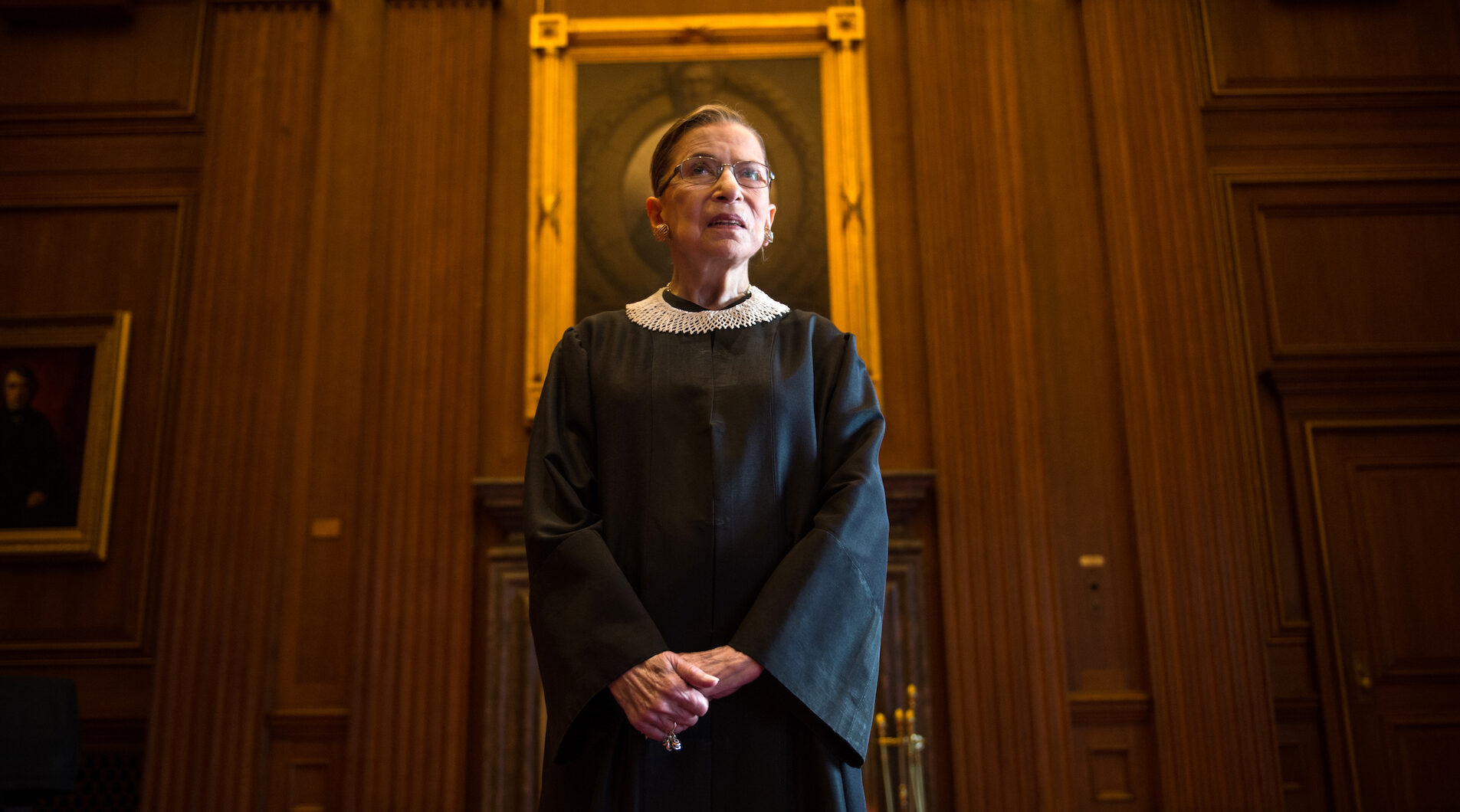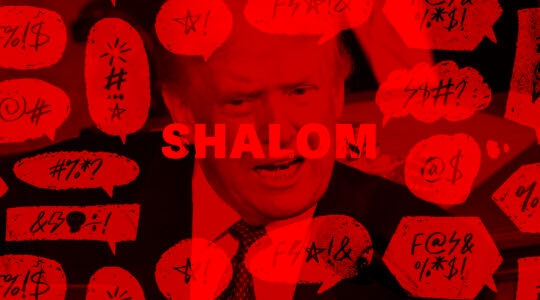(JTA) — In the haredi Orthodox world, a gadol is a Torah sage of such outstanding scholarly achievement that their legal conclusions are widely accepted and their words are deemed worthy of close study and repetition. More than just a mere expert, a gadol’s very persona is revered — photos of their visage hang on the wall, their advice is sought, they’re discussed with gushing expressions of admiration — as they symbolize not just a canon of knowledge but an entire community’s aspirations for itself.
For secular, liberal and even Modern Orthodox Jews, “gadol culture” can read as off-putting and over the top. But Justice Ruth Bader Ginsburg’s death can help non-haredi Jews acknowledge the necessity and value of gadol figures, since in retrospect, so many liberal Jews adopted her as one.
Justice Ginsburg was obviously a master jurist, whose conclusions were binding in many cases and oft-quoted even when not. But she also became a moral icon, held up as a beacon of sagacity, fierce femininity and strident commitment to progressive justice. She became Ruth the Tzaddik (the righteous one) and even — borrowing from words traditionally reserved for God — the Blessed True Judge.
Appropriately, a rabbinic gadol is surrounded by an aura of stories, mythology and fawning hagiography. Some of this media emphasize just how intensely and gracefully the gadol embodied communal values and how different they are from us in their brilliance, while others detail how surprisingly warm or approachable they are in spite of it. I invite you to spend a few hours on Netflix enjoying Ginsburg’s parallel treatment.
Ultimately, a gadol is a legal personality with whom we have an emotional attachment. This attachment manifests in material objects, like framed photos, rabbinic “baseball” cards for kids and subtle changes in the kind of hat or dress that a follower dons. For the Notorious RBG, it’s expressed in tote bags, street art and homages to her iconic lace jabot.
But the emotional attachment really shows itself (perhaps more than we’d even expect) upon the gadol’s death. Thousands gathered to mourn the death of the last American gadol, Rabbi Moshe Feinstein, and nearly 1 million attended the funeral of Israel’s last great sage, Rabbi Ovadia Yosef. So, too, tens of thousands gathered online and on the Supreme Court steps to mourn the death of Ruth Bader Ginsburg. And just like when these towering spiritual figures passed, many feel inspired by RBG’s life to make meaningful changes in their own.
In their passing, we suddenly feel the gap in our lives that these icons once somehow filled. That’s when you know this “scholar” was actually much more than that.
Maybe Justice Ginsburg’s passing is a good moment for non-haredi Jews to appreciate what works and is so important about gadol culture.
Legal scholarship, whether secular or sacred, is often seen as a dry, limited pursuit. But when someone combines impeccable knowledge of the law with a righteous heart, it’s reasonable to turn to them as a voice and speaker on the largest questions. It applies to Ginsburg, and it applies to Torah sages.
Let’s not dismiss “rabbi worship” when we have our own secular forms of avid moral fandom. Pictures, stories, hagiographies, “merch” and even fashion choices are all legitimate expressions of appreciation. And who else should we be appreciating if not our moral and spiritual heroes?
In gadol culture, age is a virtue, with wise elders acting as decision makers and moral voices. Let them and RBG’s legacy remind us not to give into secular society’s gross ageism; a sage in their 80s or 90s is a precious gift.
We all need moral role models. Haredi Jewish culture expects those role models to be deeply analytic thinkers, living a life oriented around text yet somehow seeing far beyond the printed page, in whom the weight of communal responsibility and decades of hard-earned wisdom together adhere. Thankfully, liberal Jewish culture expects the same.
JTA has documented Jewish history in real-time for over a century. Keep our journalism strong by joining us in supporting independent, award-winning reporting.







